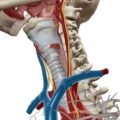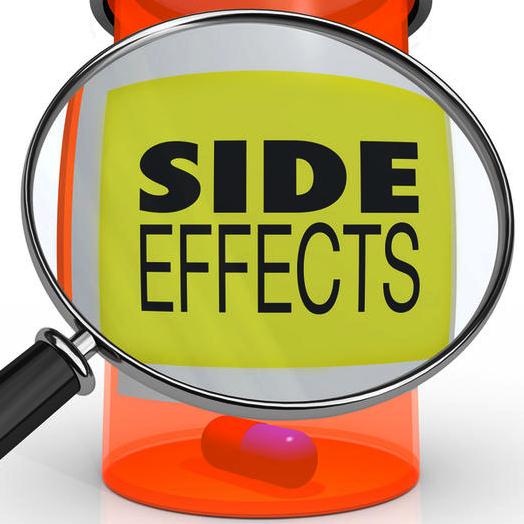Before I even wake up fully, my ears register the sound of my twelve year old daughter throwing up. It is such a familiar middle of the night sound for me that it has ceased to be alarming. She has been throwing up on a regular basis since she was 2 years old, in episodes that come and go, usually lasting one to two days. The vomiting that comes with these episodes is violent, frequent, and often accompanied by severe abdominal pain. Without medication, she will vomit every 10 to 15 minutes for hours; luckily, for the last few years, we’ve sometimes been able to successfully treat these episodes with medication.
Sometimes her episodes last longer, like one recent very bad episode where she was sick for 6 days on and off. At times during that episode the vomiting was controlled by medication, but not always. When her medication didn’t work, she would lie on the bathroom floor and moan, and say “Mommy, help me,” or worse, “Mommy, I can’t live.” We have been told that the medications we give her—prescription Zofran, over the counter dimenhydrinate (Dramamine), and Tylenol and Advil—are the only options, and that there’s nothing else we can do. But when I see her suffering, I have to believe that there must be something more that can be done, because nobody should suffer like that, especially not a child.
When she was younger, the episodes would come every month or two. She is my oldest child, and for a long time I assumed she was just very susceptible to getting stomach flu, and that she was severely affected every time she got a stomach virus. As my other two children got older, and I realized how unusual the severity of her vomiting was, and the frequency of her episodes increased, I started to suspect it was something bigger than just stomach flu. I mentioned my concerns to her doctor, and he agreed, and suggested it might be cyclic vomiting syndrome.
Cyclic vomiting syndrome, or CVS, is a poorly understood, and under recognized disorder. Although it was originally thought to be a pediatric disorder, it is now known that it can occur in all ages, and that it is more common than previously thought. It is characterized by episodes of severe nausea and vomiting that alternate with periods with no symptoms. Some patients with CVS have symptoms in addition to nausea and vomiting during episodes such as headache, dizziness, fever, sensitivity to light, and diarrhea. For each individual with CVS, the episodes are similar to each other: they generally start at the same time of day, include the same symptoms, and last the same length of time. For my daughter, she always started vomiting in the middle of the night or early in the morning, it lasted about a day, and occurred every month or two. As she gets older, everything about her episodes has become less predictable. They have sometimes lasted longer, or clustered in groups where she can have one episode per week for three weeks, then nothing for three months. CVS is thought to be a part of the migraine spectrum, and sometimes patients are able to identify things that trigger episodes such as certain foods, illnesses, cyclical hormone changes, stress, or fatigue.
Cyclic vomiting syndrome is difficult to diagnose, because there is no specific test for the disorder. Therefore, it must be diagnosed by excluding all other possible reasons for the vomiting and other symptoms. My daughter was referred to a gastroenterologist and an endocrinologist. In addition to her episodes of vomiting, she is very small for her age. After a workup by both doctors, they couldn’t find any reason for her vomiting or her small size. Her gastroenterologist was reluctant to offer any diagnosis at all, even when I asked about CVS.
Because there is no physiological defect that with CVS can be measured by the medical tests we have currently, many times patients are told that their problems must be “in their head,” or just caused by anxiety, depression, or other mental health problems. Similar attitudes are faced by patients with many other functional disorders, which are diseases where no specific defects can be observed by medical tests. Functional disorders include fibromyalgia, irritable bowel syndrome, migraines, chronic fatigue syndrome, complex regional pain syndrome, and restless legs syndrome. It is short-sighted and insulting to patients to conclude that their problems are not real just because current diagnostic tests can’t detect a defect, and in many cases disbelief or dismissal by medical professionals leads to long diagnostic delays, during which time the patient suffers needlessly without treatment.
My daughter was faced with a version of this attitude, when for a time her gastroenterologist seemed to question repeatedly whether she might have anorexia or bulimia. The concern is legitimate, and it is important to rule out the possibility; however, the issue seemed to come up over and over again for us despite our answers. My daughter was asked if she ever didn’t eat because she was worried about getting fat, and she looked very surprised, because she’s worried about the exact opposite—she would love to be bigger. Clearly she doesn’t have bulimia, when she is waking up in the middle of the night and vomiting in her bed, and writhing in pain on the bathroom floor. Sometimes it gets very frustrating when doctors don’t seem to listen to and hear the answers that they are being given, because they have other ideas that conflict with what you are saying.
We were lucky, because my daughter’s pediatrician mentioned CVS as a possibility very early on. Otherwise I don’t think we would have any idea what her diagnosis might be, because her gastroenterologist was content to just rule things out based on test results, and not offer any opinion on what the problem actually is. It has been beneficial for us to have what we think is a likely possibility for a diagnosis, because it has allowed us to figure out strategies for helping her, including trying to avoid her triggers. The medication that was prescribed by her pediatrician is very useful for helping to manage her episodes when they do happen, although it isn’t as much of a complete solution as I would like, and I am still searching for additional treatments that may help. However, her episodes are less debilitating than they used to be thanks to the medication, and overall she is thriving despite her illness: in between episodes she is a happy, healthy twelve year old who loves figure skating, soccer, Glee, and texting her friends.
















































